Edward Charles Stirling was a ‘Renaissance man’ who possessed a profound interest in and knowledge of many topics. He trained in medicine and the arts, and was also keenly interested in anthropology, palaentology, exploration, zoology, horticulture, public health, education, the advancement and accessibility of culture and the arts, the rights of women, and social justice. His incredible energy facilitated remarkable achievements in every one of the above fields during his 71 years.
That in the opinion of this House, women… who fulfil the conditions and possess the qualifications on which the parliamentary franchise for the Legislative Council is granted to men, shall, like them, be admitted to the franchise for both Houses of Parliament. Stirling’s motion to the South Australian House of Assembly, 22 July 1885.
Early life and education
EC Stirling was fortunate to be born into a successful and influential South Australian family in 1848, and made the most of the advantages this wealth and position brought. His brilliant and inquiring mind benefited greatly from a well-rounded education which he then used to improve the lives of many. EC Stirling’s father was the significant early pastoralist and politician Edward Stirling, who arrived in South Australia in 1839. Stirling senior established several large stations throughout the colony, basing himself at ‘The Lodge’ Strathalbyn where his eldest son EC Stirling was born on 8 September 1848. During the 1860s, the family moved to Urrbrae House from where Edward junior and his brother Lancelot attended St Peter’s College. In 1864, Edward was awarded the College’s prestigious Westminster Scholarship. Due to the lack of a South Australian University, Edward subsequently spent 13 years studying and working in England. He studied at Trinity College Cambridge, from where he received a BA with Honours in Natural Science (1869), MA (1873), Bachelor of Medicine (1874) and MD (1880). In 1872, he was admitted as a Member of the Royal College of Surgeons and as a Fellow two years later. He lectured in physiology and worked as a surgeon at St George’s Hospital and Belgrave Hospital in London.
Medical and university work in South Australia
In 1877, Edward married Jane Gilbert, the daughter of significant pioneering pastoralist Joseph Gilbert. After returning to England for a few years, he then settled permanently in South Australia. In his capacity of highly trained physician, he had many skills to offer the growing colony of South Australia. He became a consulting surgeon at the Adelaide Hospital, and was also instrumental in the 1883 founding of a Medical School at the seven-year-old University of Adelaide. He was the first lecturer in Physiology, and served as the first Professor of Physiology from 1900, occupying the chair until his death. He also sat on the University Council from 1881 to 1919, and served as Dean of the Faculty of Medicine between 1908-19.
Director of SA Museum and explorer
A substantial part of EC Stirling’s time was dedicated to the South Australian Museum. He was Honorary Director of the Museum from 1884 and appointed salaried Director from 1895 to 1913. Then from 1914 until his death he was honorary Curator of Ethnology. He took part in a number of significant scientific expeditions, including pioneering explorations in Iceland (1870); accompanying Lord Kintore from Darwin to Adelaide in 1890-91 (during which he named and described the marsupial mole Notoryctes Typhlops); directing the 1892 expedition to Lake Callabonna (where the bones of Diprotodon Australis were collected); and as medical officer and anthropologist on the 1894 Horn Expedition to the McDonnell Ranges and Central Australia. During the Australian expeditions and by establishing a network of contacts throughout the country, he gathered the largest collection of aboriginal artefacts to be found anywhere in the world. In addition to this, he travelled widely in North America, China, Japan & New Zealand. The Stirling Gallery at the SA Museum was named in his honour.
Politics and supporting the rights of women
Stirling was also a great supporter of the rights of women, and was the first person in Australasia to introduce a bill for women’s suffrage. He became the North Adelaide Member of the House of Assembly in 1884, and on 22 July 1885, he proposed the following motion for women’s suffrage:
That in the opinion of this House, women… who fulfil the conditions and possess the qualifications on which the parliamentary franchise for the Legislative Council is granted to men, shall, like them, be admitted to the franchise for both Houses of Parliament.
He then expanded on his argument for women’s suffrage using the following quote from Plato:
There is no natural difference between the sexes except in strength and both should equally participate in the Government of the State.
By this time he had four daughters of his own, and he wanted them to grow up in a fairer society. Then in 1886 he introduced a formal bill for women’s suffrage into the South Australian parliament. Although this bill was not passed, it presumably prepared the way for the similar bill which was passed in 1894.
Other work for women and children
Not only was EC Stirling committed to the political rights of women, but he also believed in their right to a proper education. He lectured at the Advanced School for Girls, and also campaigned for women to be admitted to Adelaide University’s School of Medicine. His own five daughters benefited from an excellent education, and Harriet (1878-1943) went on to earn an OBE for her work with mothers and children, and Jane (1881-1966) earned a Bachelor of Science degree from Adelaide University and later played viola in the South Australian Orchestra.
Edward Charles Stirling was appointed the first President of the State Children’s Council by its founder Catherine Helen Spence. A later President was his oldest daughter Harriet (OBE), who also founded the Mothers and Babies Health Association with Helen Mayo.
Home life and botanical pursuits at St Vigeans
In 1882, EC Stirling settled near the Adelaide Hills town of Stirling which had been named after his father. He named his 6½-acre property St Vigeans, after the Scottish town where his father had gone to school. A fine two-storey house was constructed in 1882-83, and during the following decades, Stirling himself oversaw the establishment of one of Australia’s finest private botanical gardens which included trees and shrubs imported from interstate and overseas. As a fellow of the Royal Horticultural Society of London he had access to many species of plants. A major feature of his gardens were South Australia’s first rhododendrons Purchased from England, several of the varieties he introduced to South Australia were developed especially for his family, including the ‘Mrs EC Stirling’. Additional new varieties were also later developed by Edward and his head-gardener.
Honours
Stirling received many honours, of which he particularly valued being admitted as a Fellow of the Royal Society in 1893. In the same year, he was also awarded a CMG (Companion of the Order of St Michael & St George). Other awards included the Queen Regent of Holland’s Gold Medal for ‘services to art and science’ in 1892, an honorary Doctorate in Science from Trinity College Cambridge in 1910, and a Knight Bachelor in 1917.
Death
His death in 1919 was a great loss to his family, as well as to the countless organisations which he served so tirelessly. He was subsequently cremated, with his ashed being interred alongside other members of his family in the North Road Cemetery at Nailsworth.
Wife and children
With his wife Jane Stirling (1848-1936), they had seven children:
Harriet Adelaide (Harrie) (1878-1943);
Anna Florence (1879-1939);
Jane Winifred (Jeannie) (1881-1966) (married Thorburn Robertson);
Alice Mary (Mary) (1884-1925);
Nina Eliza Emmeline (1888-1976);
Edward Taylor (1889-1897) died falling from a tree aged 7;
Gilbert Lancelot (b. c. 1890 or 91, died in infancy).
Involvement with organisations both in SA and abroad
He was involved with the following organisations:
Honorary Fellow of the Anthropological Institute of Great Britain
Fellow of the Royal Horticultural Society of London
Corresponding Member of the Royal Zoological Society of London
Fellow of the Medical and Chirurgical Society
Member of the Pathological and Clinical Societies of London
Member of the Physiological Society of London
Honorary Member of the Gesellschaft Naturforschender Freunde of Berlin
Elected (but not served) as President of the Section of Surgery at the 2nd Intercolonial Medical Congress at Melbourne (1889)
President of the SA branch of the British Medical Association (1889)
First President of the Adelaide Medical Students Society (1889)
President of the Royal Society of South Australia (1890)
Member of the House of Assembly of SA (1883-86)
First President of the State Children’s Council of Adelaide
Member of the Board of Management of the Adelaide Hospital
Member and Chairman of the Board of Governors of the Public Library, Art Gallery and Museum of SA (from 1882)
Honorary Director of the SA Museum (from 1885)
Member of the Council of the Zoological Society of SA
President of the SA Branch of the British Science Guild
Dean of the Faculty of Medicine at the University of Adelaide (1908-1919)
President of the Australasian Medical Congress in Adelaide (1905)
President of RSPCA (SA) (1916-19)


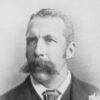

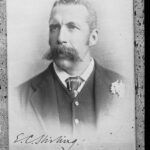
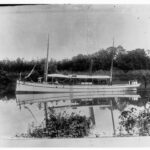
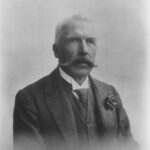
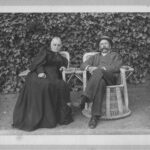


Comments